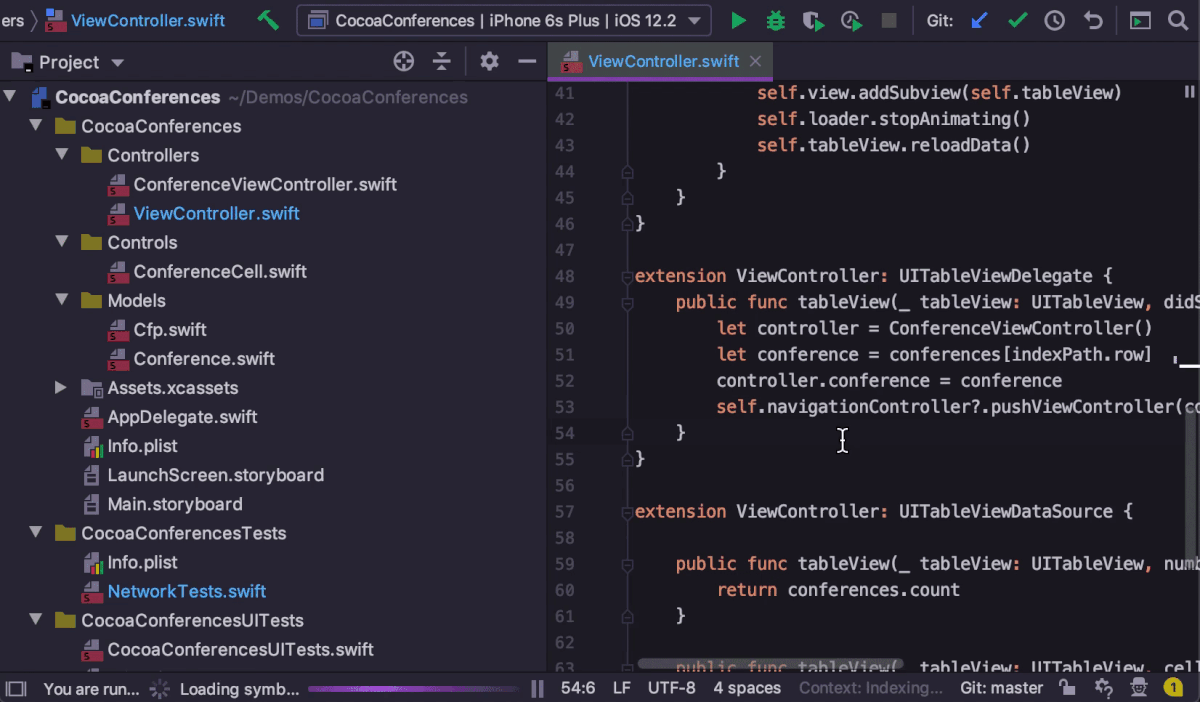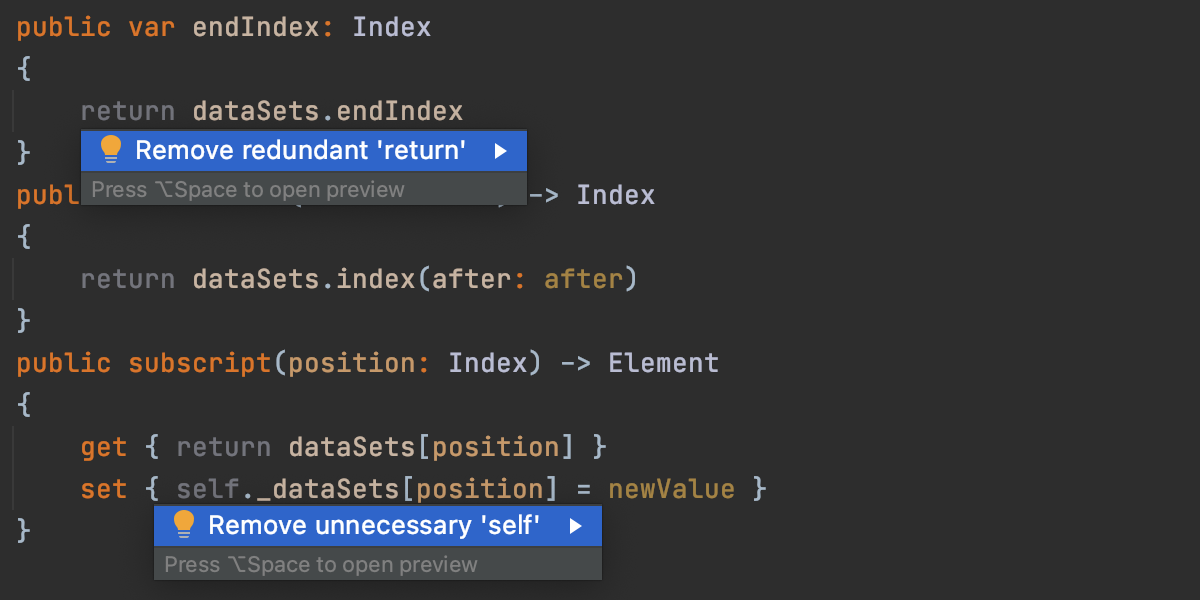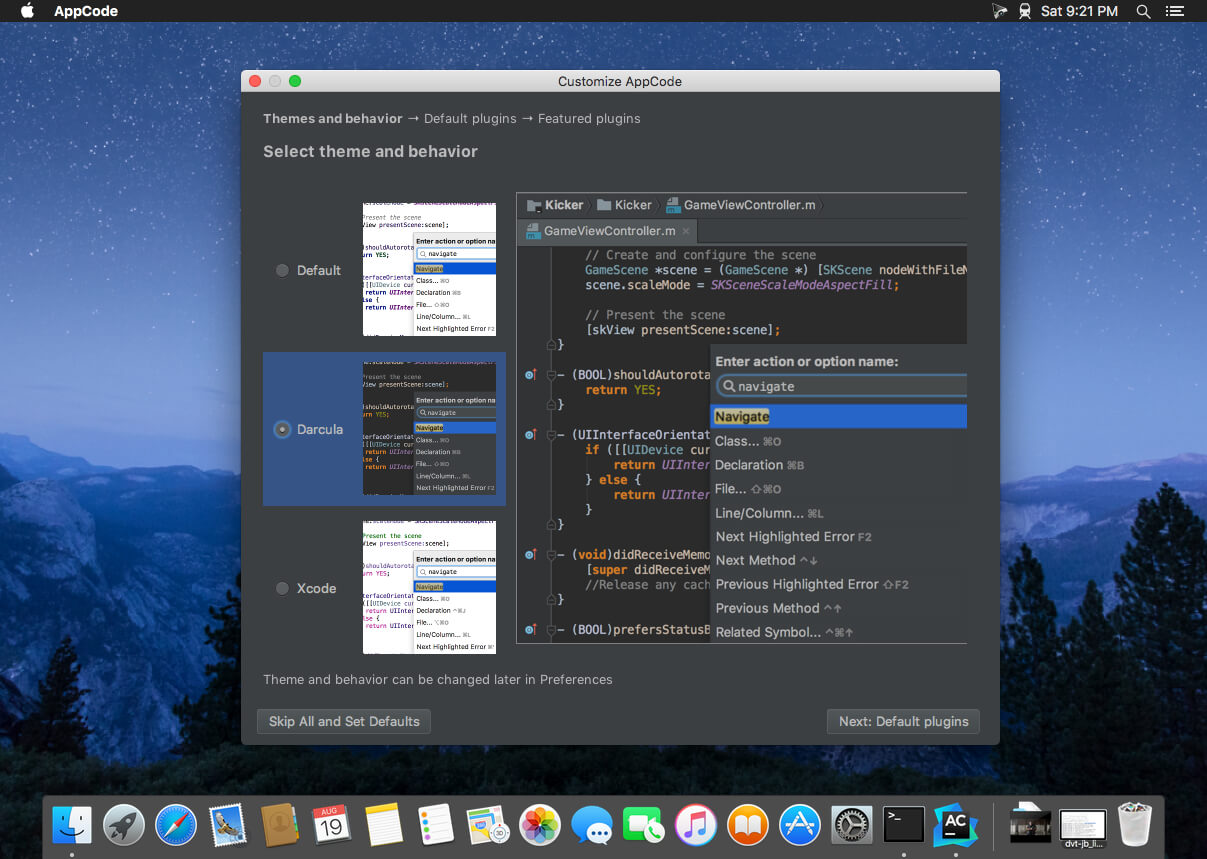

- #Jetbrains appcode storyboard update
- #Jetbrains appcode storyboard android
- #Jetbrains appcode storyboard code
- #Jetbrains appcode storyboard trial
#Jetbrains appcode storyboard android
Kotlin Multiplatform use cases Android and iOS applications
#Jetbrains appcode storyboard code
It reduces time spent writing and maintaining the same code for different platforms while retaining the flexibility and benefits of native programming. The Kotlin Multiplatform technology is designed to simplify the development of cross-platform projects. We'll do our best to minimize any changes you have to make. It is almost stable, but migration steps may be required in the future. With some basic understanding of iOS patterns and paradigms the transition is very easy and helpful.Kotlin Multiplatform is in Beta. NET developers to use their existing skills for popular mobile platforms. Xamarin is a very nice platform that allows. It is rarely OK to have two methods with the same name in a class differentiated ONLY by their casing. Note: The code I write here is demo code and not an example of production ready code. SayHello is defined in the view controller so it can then operate on associated views. From that I can get the input the user provided and then call SayHello on the view controller because I know the class reference given to the constructor implements ISayHello which guarantees the method SayHello exists. Notice the class declaration for the View Controller:īy doing this, I am able to assign this class to the delegate property of UIViewController so when the user presses the “OK” button the delegate method Dismissed is fired.
#Jetbrains appcode storyboard update
You can see the the constructor for this classes takes the ISayHello interface, this is so we have a way to call back to our view to update when the delegate method fires (very common paradigm in Android). Here is the source code for MyAlertViewDelegate: This is not at all dissimilar from how Android developers approach this sort of situation with Adapters. The Xamarin documentation recommends creating a subtype of any protocol you intend to implement. I am not sure the reason but the protocols for Objective-C were brought over as classes, instead of interfaces. This class is of type MyAlertViewDelegate.

Looking at the above code you notice that for the Delegate property I am assigning the variable _alertViewDelegate. Notice in this case, I have defined the AlertView to use the PlainTextInput style which will give the popup a textfield for text entry (I am asking for the users name).

This is done intentionally to ease the transition. You can see the usage of the AlertView class with the same name as its Objective-C counterpart. Instead you will want to define the actual implementations for these partial methods in the related class file (in my case GitHub.AppViewController), this is usually the file which the designer file is linked to. Here is a picture of mine as an example:Īs with most files containing generated code you are not going to want to edit this file. If you open this file you will see partial methods being used to bind the C# methods to the Objective-C methods they related to. Save the file and return to Xamarin studio and open your designer.cs file (below): Wireup the IBOutlets and IBActions as you would normally, however, notice the lack of a. Open up your Storyboard file (double click) and it will launch Xcode. However, Xamarin does something pretty cool with this. It is no different with MonoTouch as it is still the easiest way to build the interface. It doesn’t seem to matter who does what, we can’t get ride of Xcode (unless you build all views by hand). For this brief dive we will be focusing squarely on iOS development on the Mac.
#Jetbrains appcode storyboard trial
In terms of the free trial you can only use Xamarin studio to develop iOS apps on Mac or use the Visual Studio plugin to develop Android apps on Windows. Xamarin applications are developed one of two ways: 1) through Visual Studio as a plugin or 2) using the Xamarin Studio development environment. However, I still felt that learning the patterns and paradigms of iOS would make it easier to use MonoTouch (the Xamarin product which allows iOS apps to be written using C#) this has proven true. I already possess very solid C# skills so the idea of being able to use C# over Objective-C and still create iOS apps was very appealing to me. One of the big reasons I have focused so heavily on learning Objective-C and iOS is to ease this transition. I recently decided to begin diving deeper into Xamarin for iOS.


 0 kommentar(er)
0 kommentar(er)
